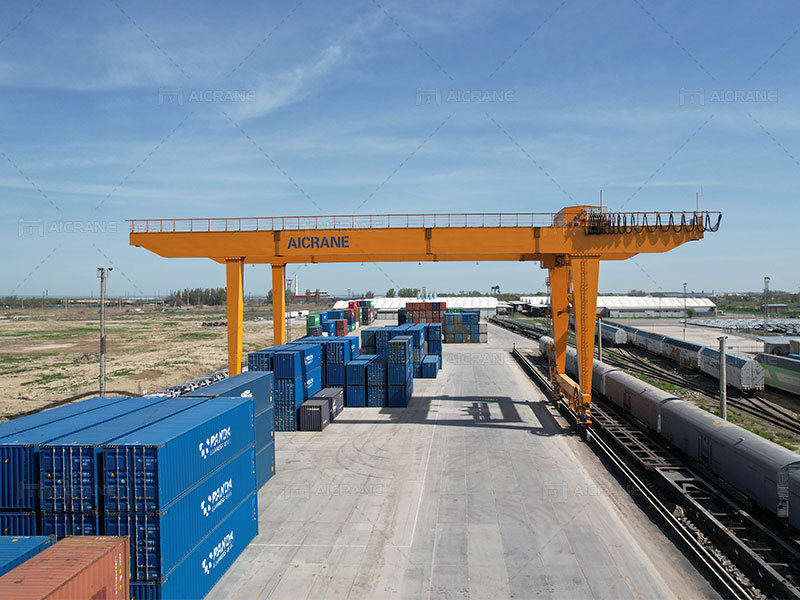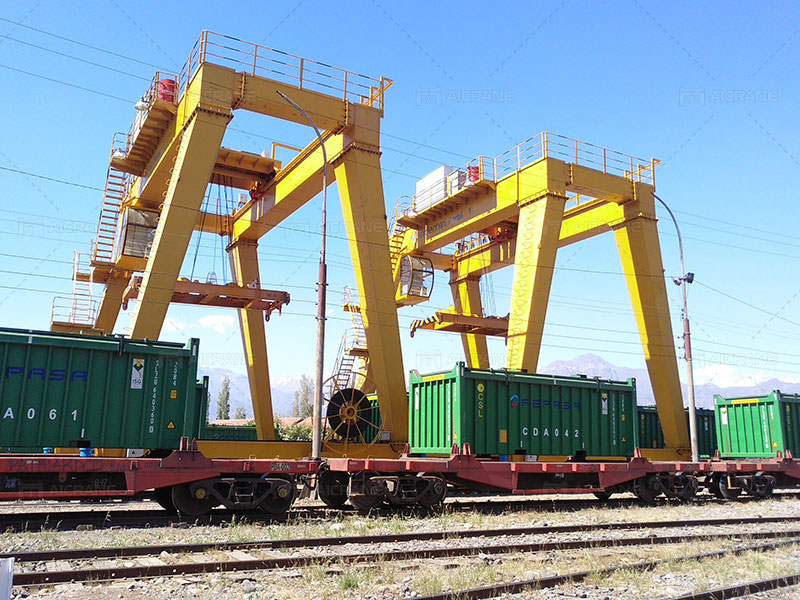Gantry cranes have long been a crucial element in heavy-duty lifting and handling operations across various industries. In railway and transportation applications, large gantry cranes play an indispensable role due to their capability to handle massive loads, their adaptability to diverse environments, and their contribution to the efficiency of operations. This article will explore the key aspects of large gantry cranes, their uses in railway and transportation sectors, benefits, types, safety considerations, and technological advancements.

Understanding Large Gantry Cranes
Large gantry cranes are heavy-duty cranes designed to operate on a set of rails or tracks, usually spanning across a wide area to accommodate the lifting and movement of heavy loads. They consist of a bridge supported by two or more legs, which move on fixed rails. This structure allows for a substantial lifting capacity and extensive working span, making them ideal for handling bulky and heavy items in expansive outdoor or indoor spaces.
Large gantry cranes are often equipped with additional features such as cantilevers, which allow for more flexible handling of loads beyond the span of the crane itself. With capacities ranging from 30 tons to over 500 tons, these cranes are essential for transporting heavy machinery, containers, railcars, and other oversized components.
Applications of Large Gantry Cranes in Railway and Transportation
Large gantry cranes find significant applications in the railway and transportation industries. Here are some key areas where they play a crucial role:
- Loading and Unloading Railcars: In railway yards and cargo terminals, large gantry cranes are extensively used for loading and unloading heavy cargo, such as containers, machinery, and bulk materials, onto and off railcars. These cranes enable quick and efficient handling of goods, reducing turnaround time and increasing operational efficiency.
- Handling Containers in Intermodal Yards: In intermodal yards, where goods are transferred between different modes of transport (e.g., from rail to truck or vice versa), large gantry cranes are used to handle containers. Their ability to lift, move, and stack containers of varying sizes makes them indispensable in intermodal operations. Rail-mounted gantry cranes (RMG cranes) and rubber-tired gantry cranes (RTG cranes) are commonly used in these settings for their mobility and flexibility.
- Railway Construction and Maintenance: Large gantry cranes are vital in railway construction projects, especially for lifting and placing heavy rail components, tracks, and pre-cast concrete segments. They are also used in the maintenance of rail infrastructure, such as replacing tracks or handling maintenance equipment and materials.
- Transporting Heavy Machinery and Equipment: In transportation hubs and logistics centers, large gantry cranes handle the transportation of heavy machinery and oversized equipment, such as transformers, turbines, and large-scale generators. Their capacity to lift and move these heavy loads safely and efficiently is critical to the smooth functioning of transportation networks.

Types of Large Gantry Cranes Used in Railway and Transportation
There are several types of large gantry cranes used in railway and transportation applications, each designed to meet specific operational requirements:
- Rail-Mounted Gantry (RMG) Cranes: RMG cranes are designed to operate on fixed rails, making them ideal for environments where precise, repetitive handling of containers and bulk cargo is required. They offer high stability, lifting capacity, and automation, which makes them well-suited for intermodal terminals and container yards.
- Rubber-Tired Gantry (RTG) Cranes: Unlike RMG cranes, RTG cranes operate on rubber tires, providing mobility and flexibility to move within a container yard or logistics terminal. They are particularly useful in areas where space is limited, or multiple loading and unloading operations are required simultaneously. RTG cranes are popular for their ability to handle containers and cargo in compact spaces.
- Double-Girder Gantry Cranes: These cranes feature two parallel girders, providing enhanced lifting capacity and stability. Double-girder gantry cranes are often used for heavy-duty applications, such as handling large containers, railcars, and bulky materials. They are highly customizable, allowing for a range of configurations to meet specific needs.
- Goliath Gantry Cranes: Goliath cranes are some of the largest types of gantry cranes, designed for extreme heavy-duty applications. With their massive lifting capacity and extensive span, they are ideal for handling extremely heavy loads, such as locomotives and large prefabricated components, in railway yards and transportation hubs.
Benefits of Using Large Gantry Cranes in Railway and Transportation
- High Lifting Capacity: Large gantry cranes are designed to handle heavy and oversized loads with ease. This high lifting capacity allows for the efficient transportation of cargo that would be impossible or highly impractical with smaller cranes.
- Improved Efficiency: By facilitating faster loading, unloading, and transportation of goods, gantry cranes significantly reduce downtime in railway and transportation operations. This increased efficiency leads to lower operational costs and higher throughput.
- Versatility: Large gantry cranes are highly versatile and can be used for various applications, from container handling in intermodal yards to heavy machinery transportation in logistics centers. They can also be equipped with specialized attachments for handling specific types of cargo.
- Enhanced Safety: With advanced safety features, such as anti-sway mechanisms, overload protection, and collision avoidance systems, Aicrane gantry cranes ensure the safe handling of heavy loads. This reduces the risk of accidents and damage to goods, equipment, and personnel.
Safety Considerations and Technological Advancements
Safety is paramount when it comes to operating large gantry cranes in railway and transportation applications. Ensuring proper training for operators, regular maintenance checks, and compliance with safety standards is crucial. Many modern gantry cranes come equipped with advanced safety features, such as:
- Anti-Sway Systems: These systems minimize load swing during crane operations, improving load control and safety.
- Collision Avoidance Systems: These systems prevent collisions between cranes or with other equipment, enhancing operational safety.
- Remote Control and Automation: Remote-controlled and automated gantry cranes reduce the need for human intervention, minimizing risks associated with manual operations.
Technological advancements, such as the integration of IoT (Internet of Things) sensors, data analytics, and automation, are also transforming the use of large gantry cranes. These technologies provide real-time monitoring, predictive maintenance, and optimized operational efficiency, making crane operations safer and more cost-effective.
Conclusion
Large gantry cranes are a cornerstone of railway and transportation applications, providing the essential lifting capacity, versatility, and efficiency required to handle heavy and oversized loads. Their ability to facilitate quick and safe handling of goods, coupled with modern safety features and technological advancements, makes them indispensable in these sectors. As railway and transportation industries continue to evolve, the role of large gantry cranes will remain crucial in enhancing operational efficiency, safety, and productivity.